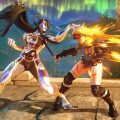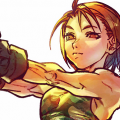Fighting Games Friday: The Importance of X-Men: Children of the Atom

The final entry in Polygon’s long-running series documenting the development histories of Capcom’s Street Fighter games is about X-Men: Children of the Atom. This is, as the title implies, not a Street Fighter game despite Akuma having a guest appearance.
The game’s achievements in the 1990s and the feature both reveal how important of a title it was to the SF franchise. It counts as an important milestone in its history, the game that gave birth to a slew of Capcom’s Marvel games and other fighters inspired by those titles. This is only partially due to the eventual crossovers made.

A number of Capcom’s early Marvel initiatives were handled by Katsuya Akitomo, perhaps the biggest Marvel fan working for the company at the time. It was Akitomo who got a bunch of Capcom staffers into Marvel’s works, and his English-speaking skills allowed for him to initiate contact with Marvel Entertainment. This led to the two companies collaborating on Children of the Atom, a new fighting game bound to be different from Capcom’s previous efforts at the time. This was the continuation of an already-established partnership between the two, following a collaboration on the side-scrolling arcade beat ‘em up based on The Punisher. Marvel took issue with how that game turned out thanks to it being too violent for them even at the time, but Akitomo allowed for them to provide easier feedback between the companies.
The X-Men franchise was chosen because it was Marvel’s most popular brand at the time, with Spider-Man being the only other franchise in the same popularity ballpark. The initial plan, according to Capcom USA’s Alex Jimenez, was to make an all-Marvel fighting game, but an X-Men title allowed for making easier cast choices.
Capcom had an easy time getting these games green lit because of Marvel’s poor financial shape in the mid-1990s, a company that was hard-up for cash. The idea was for the company to make a new fighter that inherited their expertise from previous games, and the production team couldn’t have asked for better talent when Akira Nishitani came onto the game to provide game design work. Nishitani chose to work on COTM instead of Street Fighter III, and the final game benefited from it.

The idea behind COTA was to make a title more over the top compared to the SF games, shown through the ability to rack up a higher combo count through quicker button presses, and air combos that went beyond juggles. There were players who found it too different to adjust to, or didn’t like how its gameplay was easier to pick up and play compared to the SFII games. But the title succeeded in expanding the audience for Capcom’s fighting games beyond those already playing SF titles and, to a lesser extent, Darkstalkers. The game launching while the X-Men cartoon series was still on the air only helped its popularity.
Like any licensed fighting game, there was much deliberation among the developers over COTA’s cast. Akitomo noted that he wanted Venom in the game, despite not being an X-Men character. (This game started development only a few years after Venom debuted in the Spider-Man comics and became an instant hit.) This was, to no surprise, rejected by Marvel. Jimenez suggested Gambit and Rogue, but both were also rejected. Marvel didn’t want Gambit for ostensibly bizarre reasons, because he was (initially) a morally ambiguous thief and trickster. It’s possible this happened because Marvel and Capcom agreed to have a set number of heroes and villains, and wanted a more heroic X-Men member. With Rogue, the developers had trouble figuring out how to implement her powers.
All three aforementioned characters made it into future Capcom Marvel games, with the developers eventually figuring out a workaround for Rogue that she, sadly, only had for one game. I’m sure there were other characters suggested for the game that didn’t make it, but it’s a pity they didn’t speak to every developer about this.

COTA was the first of many Capcom Marvel fighters, which led to some of the best crossover games in the medium’s history. Marvel Super Heroes released in arcades not even a year after COTA, the all-Marvel game Capcom originally pitched that included an array of superheroes like Spider-Man, Captain America, and Thanos. Marvel was fine with most character suggestions for the final game, including unorthodox choices like Shuma-Gorath (likely more known for being in Capcom’s fighters than in the Dr. Strange comics) and Blackheart. COTA fully became important to the Street Fighter legacy with X-Men vs. Street Fighter, the first tag-team-based Marvel fighter from Capcom that established a long-lasting legacy.
One of my favorite anecdotes in the piece is about the voice cast. Marvel was reportedly not happy with the voice talent in the final version, which presumably featured Japanese voice actors trying to speak English and other voices that didn’t measure up. With weeks to go, Capcom USA and Marvel hired Canadian voice talent, with some from the X-Men cartoon reprising their roles. That they were able to fix this mere weeks before the arcade machine was set to arrive at locations around the world was spectacular.
It’s a shame this was the last installment in Polygon’s Street Fighter feature series, which means they won’t provide a similar deep dive into the Street Fighter EX series, or even Darkstalkers. Those will apparently be included in the upcoming book, but the oral histories of those won’t be as large as those posted on the Polygon website. But it’s been a good series. Dives into the development processes for older games always provide entertaining info, and hopefully more will come. But that will only happen if people actually read them.





